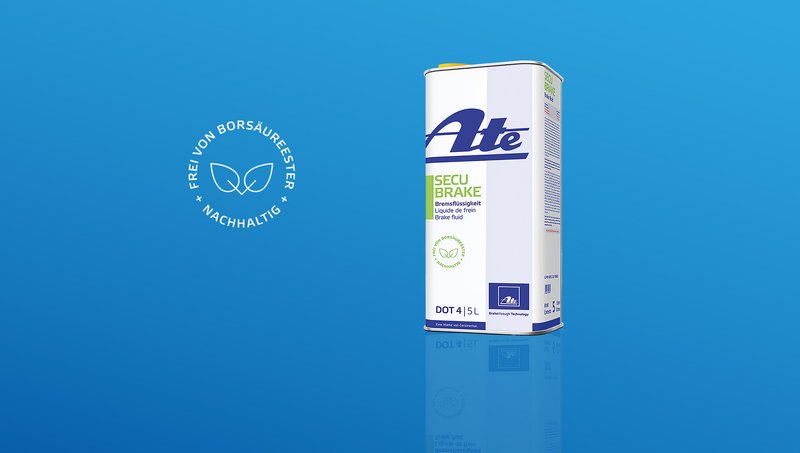Sustainable and Free of Hazardous Materials Subject to Labelling Requirements: ATE SecuBrake Brake Fluid Sets Standards
- Improved CO2 footprint thanks to certified sustainable production
- DOT 4 brake fluid contains no borate esters and is therefore not subject to hazardous substances labelling
- ATE SecuBrake is part of the new ATE New Original product line for next-generation brake systems and solutions
- Tim Lunkenheimer, head of product management for hydraulic brake systems: "ATE SecuBrake underscores our commitment as a premium manufacturer to break new ground in product development for the aftermarket"
Frankfurt, Germany, November 25, 2024. Continental’s ATE SecuBrake is the first sustainably produced brake fluid that contains no hazardous substances subject to labelling. It exceeds the requirements for DOT 4 brake fluids and is therefore also suitable for electric vehicles. ATE SecuBrake is the first available product in the new ATE New Original line. The range encompasses all of the company’s solutions for advanced braking systems of the next generation. These products reconcile high performance with sustainability. "ATE SecuBrake underscores our commitment as a premium manufacturer to break new ground in product development for the aftermarket," says Tim Lunkenheimer, head of aftermarket product management for hydraulic brake systems at Continental. "Workshops can make an important contribution to sustainability by increasingly using more eco-friendly products."
Performance and sustainability "Made in Germany"
ATE SecuBrake is certified according to the mass-balance standard. The starting point, ethylene, is derived mainly from renewable raw materials. The CO2 footprint of this process is significantly better than with conventional brake fluids. More than 80 percent of the raw materials are obtained from renewable sources.
Free of hazardous materials subject to labelling requirements
ATE SecuBrake also contains no borate esters, eliminating the need for hazardous substance labelling according to the EU Regulation on Classification, Labelling and Packaging of Substances and Mixtures (CLP) and the Globally Harmonized System of Classification and Labelling of Chemicals (GHS) developed by the United Nations. This simplifies handling in the workshop and makes storage in a hazardous materials warehouse unnecessary. Safety on the job is improved and work with DOT 4 brake fluids is made easier. In addition, employees do not have to receive safety training, as is required with conventional brake fluids.

Alena Liebram
Media Spokesperson Automotive Aftermarket, Continental Engineering Services and Technology Organization
Continental Automotive


